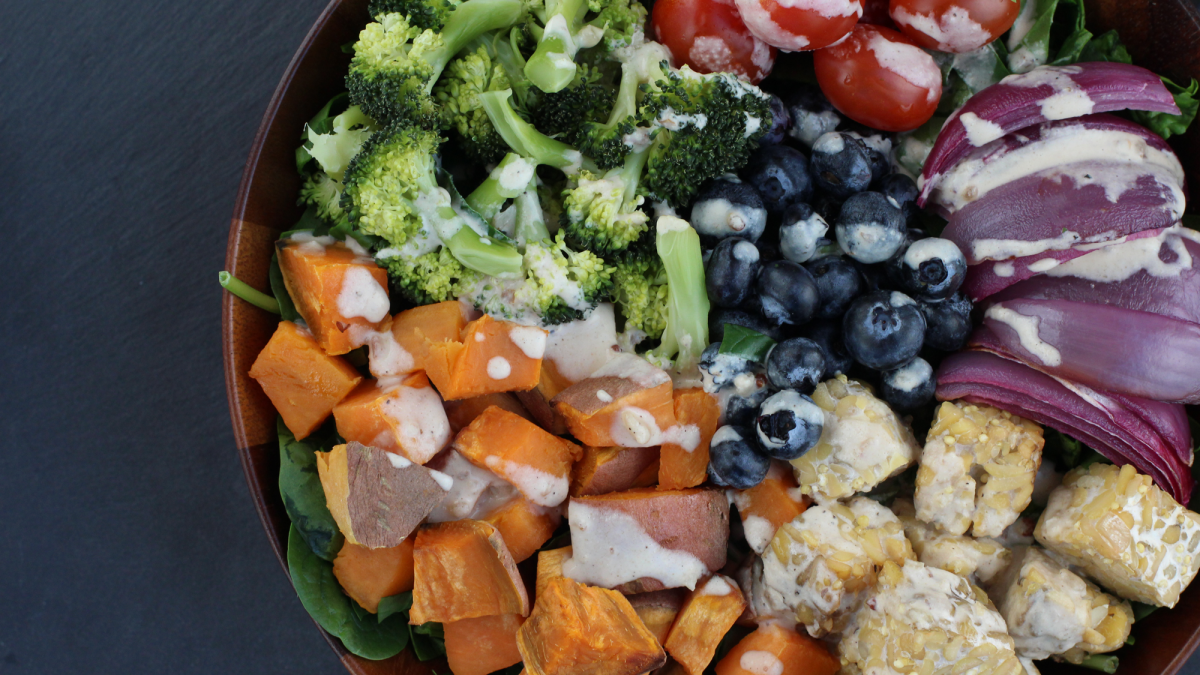Updated 2019
I go into specifics of the Daily Dozen foods I recommend in my video, Dr. Greger’s Daily Dozen. And for a more thorough dive into the science on these foods, check out my NYT best selling book, How Not to Die. The balance of scientific evidence suggests that the healthiest way to eat is a vitamin B12-fortified diet of whole plant foods. For optimum nutrition, we should be sure to include in our daily diet not only an array of whole grains, beans, nuts, seeds, fruit, and as many vegetables as we can eat, but also specifically dark green leafy vegetables, berries, and white (or green) tea.
Attention should also be paid to these nutrients:
Vitamin B12 (see also Which type of vitamin B12 is best)
- At least 2,000 mcg (µg) cyanocobalamin once each week, ideally as a chewable, sublingual, or liquid supplement taken on an empty stomach
- or at least 50 mcg daily of supplemental cyanocobalamin (you needn’t worry about taking too much)
- or servings of B12-fortified foods three times a day (at each meal), each containing at least 190% of the Daily Value listed on the nutrition facts label (based on the new labeling mandated to start January 1, 2020—the target is 4.5 mcg three times a day).
- Those over 65 years of age should take at least 1,000 mcg (µg) cyanocobalamin every day.
- Tip: If experiencing deficiency symptoms, the best test is a urine MMA (not serum B12 level)
-
For more B12 info including doses for children, check out our infographic
- 250 mg daily of pollutant free (yeast- or algae-derived) long-chain omega-3’s (EPA/DHA)
Vitamin D (daily recommendations for those in the Northern Hemisphere; D3 from animal or plant sources may be preferable to the D2 sourced from fungi)
- Below approximately 30°latitude (south of Los Angeles/Dallas/Atlanta/Cairo)
- 15-30 minutes of midday sun (15 for those with lighter skin; 30 for those with darker skin)
- or 2,000 IU supplemental vitamin D
- Between 30° latitude (sample cities above) & 40°latitude (Chicago/Boston/Rome/Beijing)
- From February through November
- 15-30 minutes of midday sun (15 for those with lighter skin; 30 for those with darker skin)
- or 2,000 IU supplemental vitamin D
- From December through January
- 2,000 IU supplemental vitamin D
- From February through November
- Between 40° latitude (sample cities above) & 50°latitude (Winnipeg/London/Berlin/Prague)
- From March through October
- 15-30 minutes of midday sun (15 for those with lighter skin; 30 for those with darker skin)
- or 2,000 IU supplemental vitamin D
- From November through February
- 2,000 IU supplemental vitamin D
- From March through October
- Above approximately 50°latitude (north of Winnipeg/London/Berlin/Prague)
- From April through September (or even briefer above 60°latitude (Anchorage/Stockholm))
- 15-30 minutes of midday sun (15 for those with lighter skin; 30 for those with darker skin)
- or 2,000 IU supplemental vitamin D
- From October through March (or even longer above 60°latitude (Anchorage/Stockholm))
- 2,000 IU supplemental vitamin D
- From April through September (or even briefer above 60°latitude (Anchorage/Stockholm))
- At least 600 mg daily via calcium-rich plant foods—preferably low-oxalate dark green leafy vegetables, which includes all greens except spinach, chard, and beet greens (all very healthy foods, but not good calcium sources due to their oxalate content).
- For those who don’t eat seaweed or use iodized salt, a 150 mcg daily supplement
- All menstruating women should increase their absorption by combining foods rich in iron and vitamin C at meals and should get checked for iron-deficiency anemia every few years
- Men should be checked for an iron overload disease before any attempt to increase intake
- Northern Europeans may need to take a supplement or eat a daily Brazil nut
-Michael Greger, M.D.
